It’s totally natural to become frustrated with our four-footers from time to time.
After all, our dogs are constantly learning, and the growing pains can be difficult to work through. That being said, scolding our canine companions certainly isn’t ideal.
Many owners are surprised to see their dog have an accident after scolding him. This is often the result of a problem called submissive urination. We’ll explain why this happens and let you know what to do to avoid such problems in the future.
Key Takeaways: Why Did My Dog Pee When I Yelled at Him?
- Many dogs will urinate when scolded, frightened, or simply overexcited. This is often an example of submissive urination — a behavior in which your dog is trying to demonstrate that he’s no threat so you won’t hurt him.
- Submissive urination is somewhat common, especially in puppies. Fortunately, most puppies eventually grow out of this behavior as they calm down, become more confident, and build trust with their two-footer.
- It’s often possible to resolve submissive urination, even in adult dogs. Essentially, you need to help your dog feel more confident, calm, and safe, while implementing management strategies to reduce the frequency of the problem and avoid messes in the meantime.
What Is Submissive Urination and Why Does It Happen?
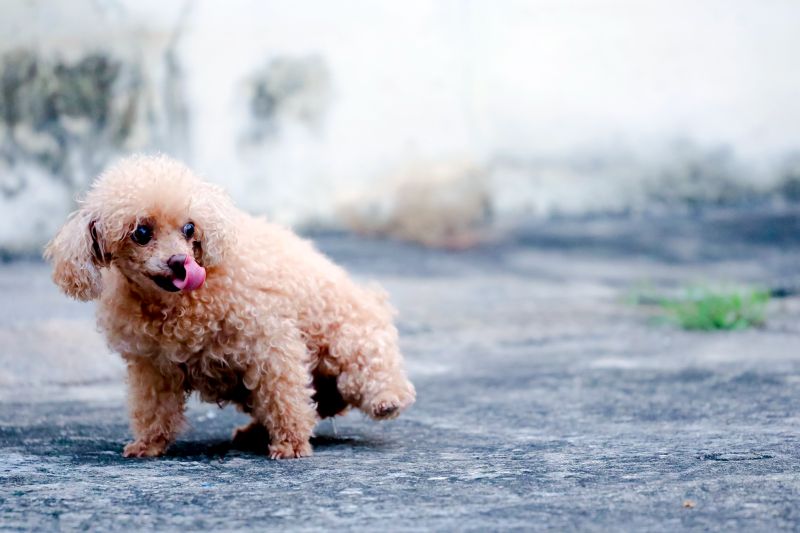
Submissive urination is a dog’s way of communicating that he’s not a threat (hence the “submission” part of the phrase).
It may occur in a variety of situations or whenever a dog is feeling stressed, anxious, excited, shy, or scared. This behavior is fairly common in puppies, but some adult doggos also struggle with the issue. Generally speaking, submissive urination occurs in both male and female dogs relatively equally.
Luckily, most puppies grow out of this behavior over time. But in some cases, it can outlast puppyhood and stick with your pup over the long term.
Submissive urination is often accompanied by other dog body language indicating stress, such as:
- Tucking the tail between the legs
- Raising one or both front paws
- Rolling onto the back
- Licking
- Flattening the ears back
Note that submissive urination can also be the result of an underlying medical issue, so it’s never a bad idea to talk to your vet about it — especially if it seems to be happening in non-stressful or exciting situations. For example, dogs sometimes experience incontinence after being spayed or neutered.
Other Reasons Dogs May Urinate at Inappropriate Times
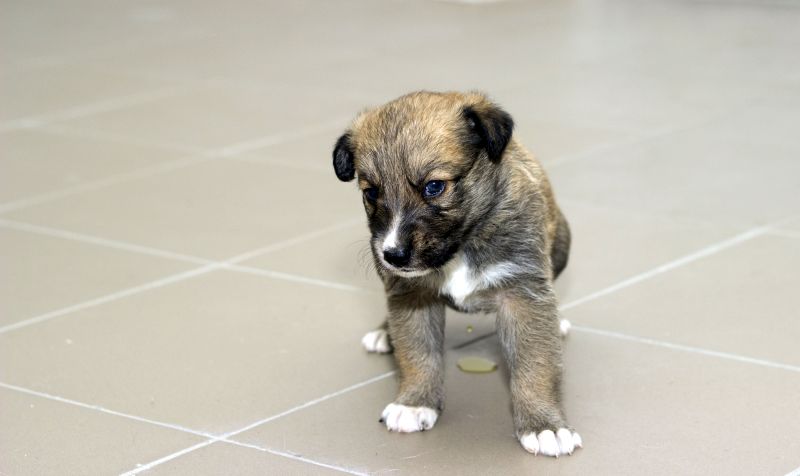
Your dog’s submission urination could be attributed to a number of causes, so it’s important to consider all possibilities to properly address the issue. Outside of simple submission, your pooch could be urinating due to:
- Fido has a full bladder. Your pooch may simply be full and have to pee. Some breeds can hold their bladders longer than others, and puppies will almost always have to pee more frequently than adults.
- Your dog isn’t fully housetrained. Housebreaking a puppy can be a long, arduous process. It’s possible that your dog hasn’t fully developed his potty skills, even if he’s had a couple of promising days.
- Your dog may have a medical issue. Dogs can urinate in inappropriate places due to a medical condition, such as urinary tract infections and incontinence. Gastrointestinal issues like inflammatory bowel disease, kidney disease, or general stomach upset can also make it difficult for your dog to control his bladder.
- It could be coincidental. Improper urination can certainly be coincidental, but you don’t want to chalk up repeated episodes to pure happenstance. If you notice your pooch experiencing submissive urination repeatedly, you’ll need to address the issue with patience and determine the root cause of this canine calamity.
How Do You Fix Submissive Urination?
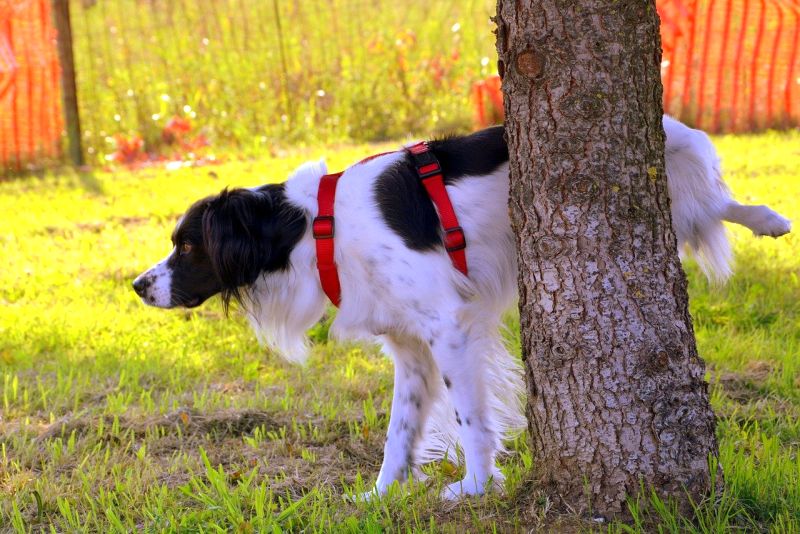
Basically, you need to help boost your canine’s confidence and help him feel more secure to put an end to this pee-pee problem.
But unfortunately, addressing submissive urination isn’t always a straight-forward, linear process. Most of the time, this condition needs to be addressed through a multi-pronged approach that takes plenty of patience, even among experienced pet parents.
Here are some of the strategies to consider while building your canine’s confidence.
Patience Is Essential
When it comes to fixing submissive urination, a combination of training approaches and dog management tactics are best. Note that this won’t be an overnight fix, but that doesn’t mean building your dog’s confidence isn’t an incredibly rewarding, bonding experience.
If your dog is a puppy, consider that your pooch may just grow out of it with age. Even so, you can take steps to make sure your dog feels safe and secure in his environment.
Do Not Yell At Your Dog
Resist the urge to yell at your dog anymore. Dealing with this issue is undoubtedly frustrating, but your dog is likely scared or anxious and needs your help to create new, positive associations. Yelling will likely exacerbate the issue and make it that much more difficult to redirect your dog’s behavior.
If you see signs associated with submissive urination or Spot is starting to sprinkle, take him outside quickly and calmly. After he’s finished emptying his bladder, give him some gentle praise and scritches.
We get it — we all experience Fido frustration from time to time. The key is to remain calm, focus on all the fantastic things your pooch does, and try to avoid getting upset.
A sense of humor also goes a long way, so don’t be afraid to laugh your way through the frustration! You may be able to get a few laughs from friends and family by sharing the ordeal on social media (be sure to tag us — we’ll laugh with you!).
Alternatively, you may just find it helpful to talk to some other pooch parents who can empathize with your situation.
Approach Spot Strategically
It’s possible that you’re intimidating Spot with your body language, which can make him nervous or fearful. So, while you’re building up your dog’s confidence, try to avoid appearing in a way that could be mistaken as confrontational.
Make sure you approach your dog slowly and calmly, and do so from the side, rather than head-on. Instead of looking him directly in the eyes, look at his back or tail instead. You can also get down on his level by bending at the knees rather than leaning forward, which could seem domineering to your dog.
You’ll want to ask anyone interacting with your dog to do the same while he strengthens his skills. Also, remember to pet your dog under the chin rather than on top of their head — dogs like this much more.
Make Introductions Calm
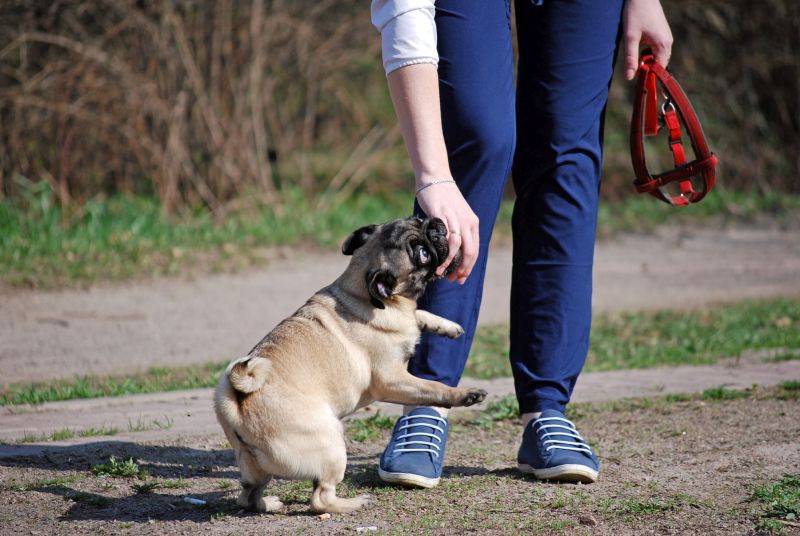
Many dogs experience submissive urination when greeting their owners or meeting other people. Therefore, it’s important to make this experience as peaceful as possible to help with your canine’s condition.
For starters, try to make introductions outside when possible. This gives your dog the space he needs to eliminate while he’s building up his skillset (and it’ll prevent puddles you’ll have to clean up).
If this isn’t an option, greet your dog over a floor that’s easy to clean or prepped with a peed pad. You can also help redirect your dog by distracting him with a toy as soon as you walk through the door.
Also, keep things as calm as possible, especially when meeting or interacting with new people. You could teach your dog to do something like sit or shake when meeting others to redirect his attention in a positive way. Lather, rinse, and repeat this process at your dog’s pace.
Keep Things Consistent
Dogs thrive on routines and there’s no exception when it comes to submissive urination. So, try to keep your pup’s schedule as consistent as possible. This will help your pooch identify around what times he can expect to get a potty break.
Since submissive urination is often caused by insecurity, you need to do anything you can to help your pooch feel more secure. Don’t overwhelm your dog with novel activities and surroundings while you’re building his confidence.
Make sure your home is a tranquil environment as well. Communicate the importance of this with your housemates so that everyone’s on the same page and pulling in the same direction.
Make Sure You’re Using Positive Reinforcement Training Methods

Positive reinforcement or R+ training methods are focused on rewarding good behaviors rather than punishing undesired behaviors. This training philosophy tends to be the safest, most effective way to build a lasting bond with your canine.
The only downside to R+ or force-free training is that it requires plenty of patience on your part. Your dog will need lots of practice before he understands what you’re trying to communicate, which is totally OK and natural. Hang in there, and trust that in time, your work with your best buddy will pay off.
Also, focus on rewarding your dog’s signs of confidence.
This could mean giving your pooch a favorite treat or praise whenever he’s sitting or standing meeting new people. As soon as you notice the desired behavior, reward him immediately so that your dog can start understanding the positive association.
Clean Up After Your Canine
Dogs are more likely to urinate in a spot that they’ve frequented before, which is why it’s so important to clean up thoroughly after your dog has an accident. You’ll want to eliminate all pee odors and stains using an effective pet cleaner.
While your dog builds up his confidence, consider using puppy pads to cut down on the mess. You could keep a couple out right by the front door, or wherever your dog tends to have his accidents.
Talk To Your Veterinarian

It’s wise to have your dog checked out by a veterinarian to rule out any medical conditions that could be associated with the improper elimination. In some cases, your veterinarian may be able to prescribe dog behavior medication to help keep your canine calm while Buddy builds his skills.
***
Submissive urination can be a challenging issue to tackle, but it’s certainly worth it for both you and your pooch. With proper training, practice, and management, you’ll be better able to build your best buddy’s confidence and phase out the issue at hand.
Has your dog struggled with submissive urination? How did you address the issue? We’d love to hear all about it in the comments below!


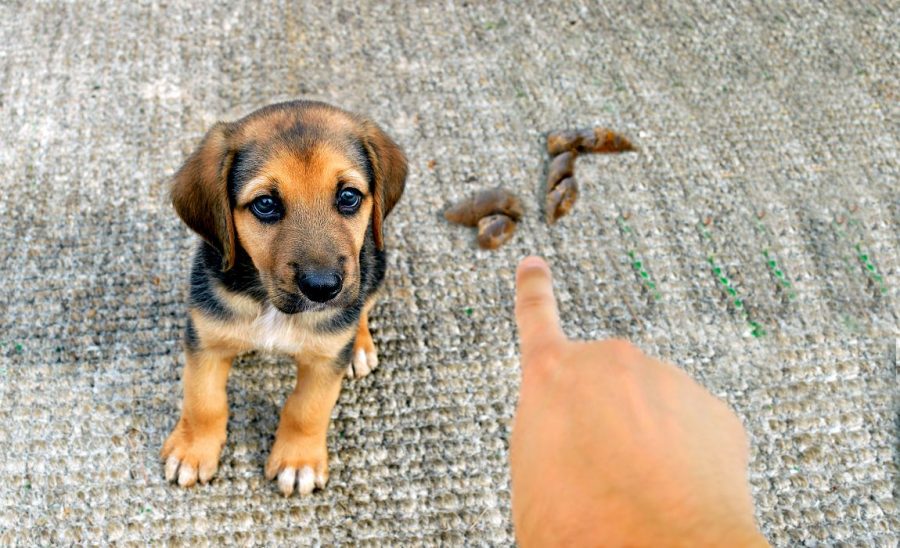


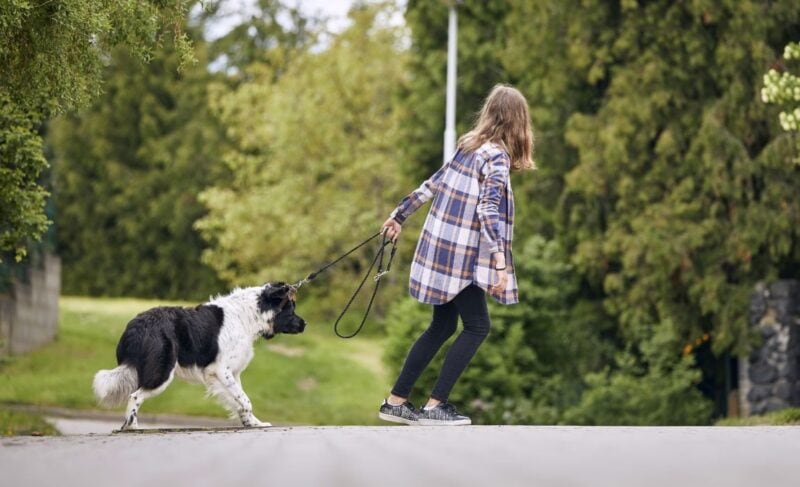
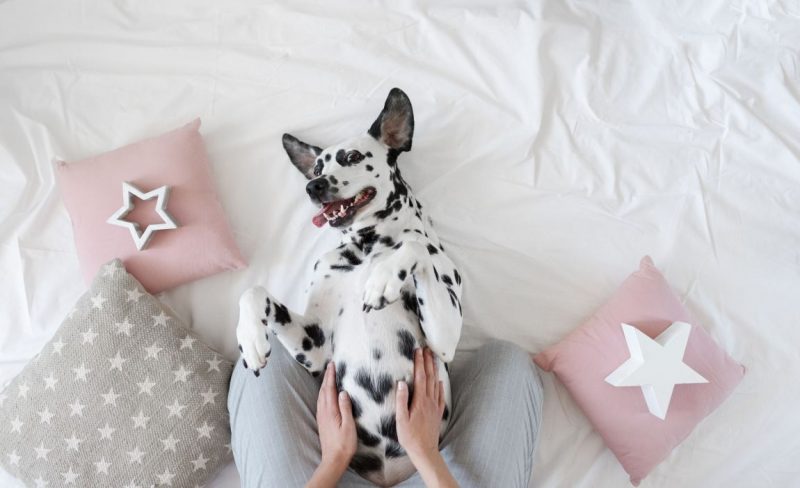
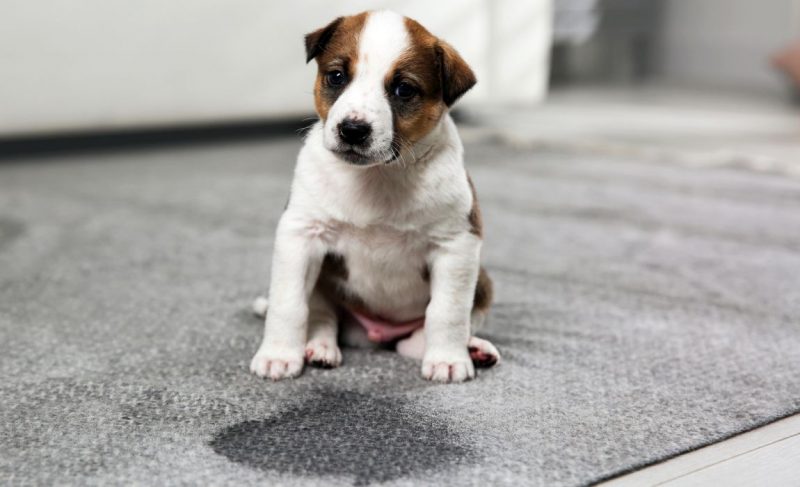
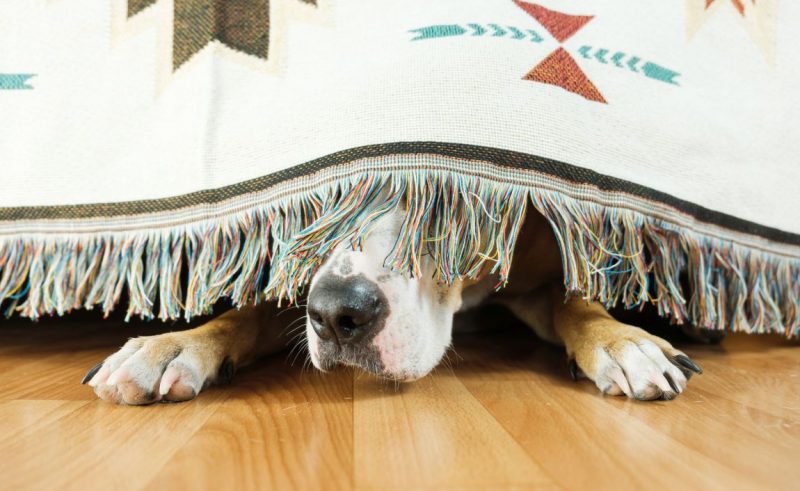
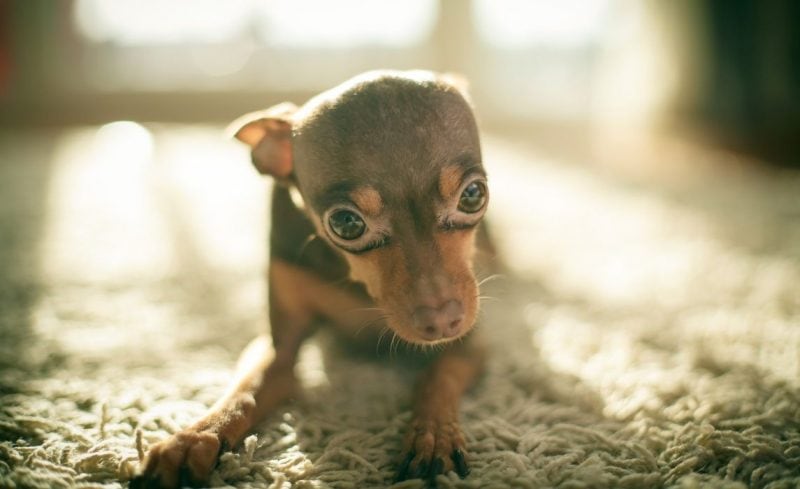
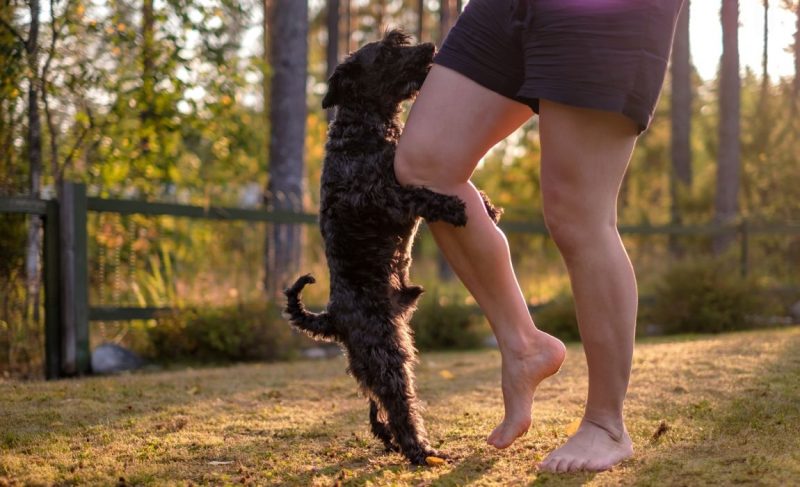
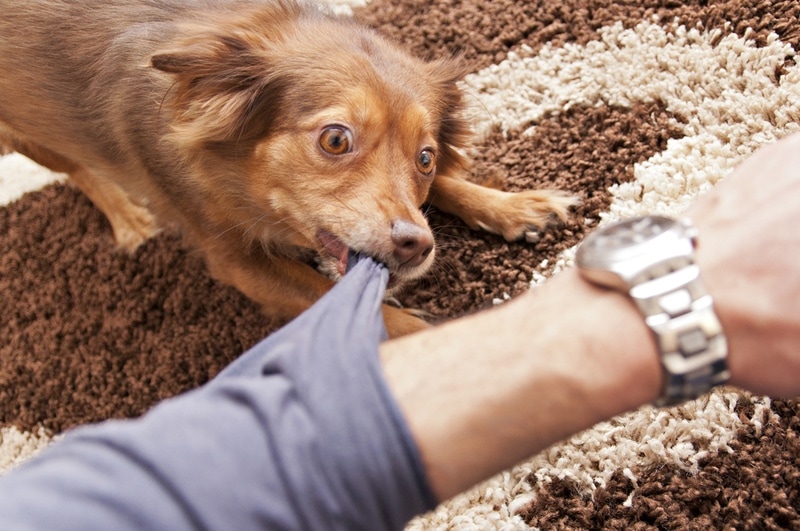

Leave a Comment